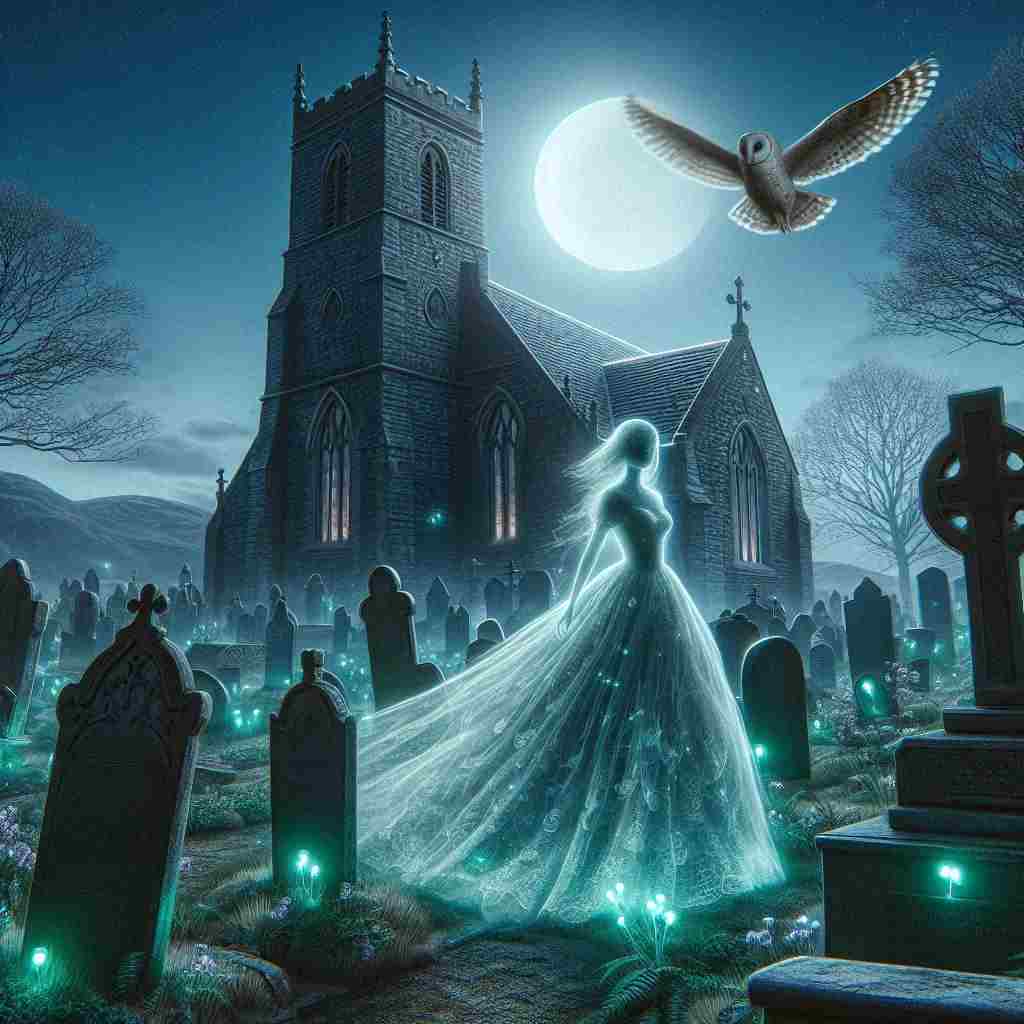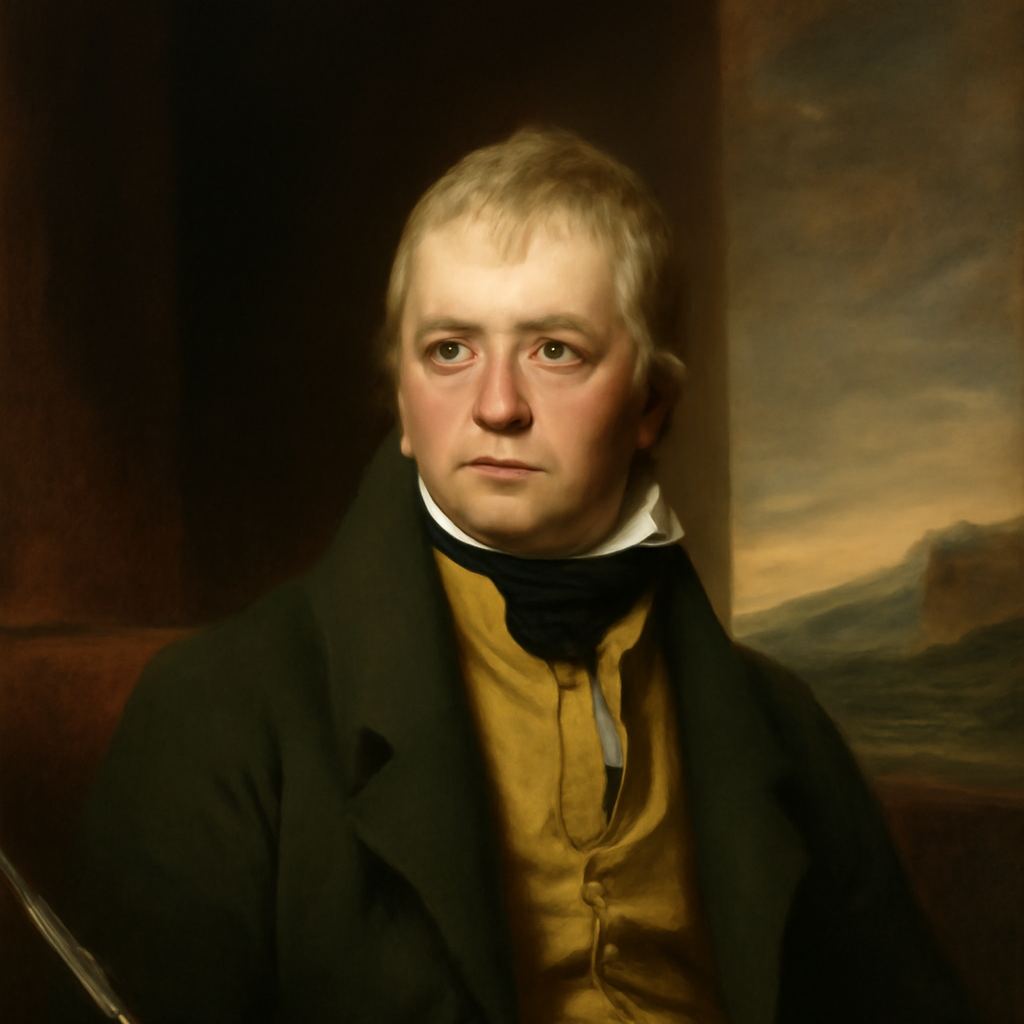Proud Maisie
Sir Walter Scott
1771 to 1832

Proud Maisie is in the wood,
Walking so early;
Sweet Robin sits on the bush,
Singing so rarely.
"Tell me, thou bonny bird,
When shall I marry me?"—
"When six braw gentlemen
Kirkward shall carry ye."
"Who makes the bridal bed,
Birdie, say truly?"—
"The gray-headed sexton
That delves the grave duly.
"The glowworm o'er grave and stone
Shall light thee steady;
The owl from the steeple sing,
'Welcome, proud lady.'"
Sir Walter Scott's Proud Maisie
Introduction
Sir Walter Scott's "Proud Maisie" is a deceptively simple ballad that belies a complex interplay of themes, imagery, and cultural allusions. This brief yet poignant poem, part of Scott's larger work "The Heart of Midlothian" (1818), encapsulates the essence of Scottish folk tradition while simultaneously addressing universal themes of youth, pride, and mortality. Through a masterful use of natural imagery, dialogue, and symbolism, Scott crafts a haunting narrative that resonates far beyond its mere sixteen lines.
Historical and Literary Context
To fully appreciate "Proud Maisie," one must first consider its place within Scott's oeuvre and the broader context of Romantic literature. Sir Walter Scott, a pivotal figure in the development of the historical novel, was also deeply influenced by Scottish folklore and ballad traditions. This poem exemplifies his ability to distill complex narratives and cultural motifs into concise, evocative verses.
The early 19th century, when Scott was writing, saw a resurgence of interest in folk traditions and supernatural elements, particularly in Scotland. This revival, part of the broader Romantic movement, sought to reconnect with a perceived simpler, more authentic past. "Proud Maisie" embodies this trend, utilizing elements of traditional ballads—such as the dialogue between a human and a bird—while infusing them with a distinctly Romantic sensibility.
Structure and Form
The poem's structure is deceptively simple, consisting of four quatrains with an ABCB rhyme scheme. This form, reminiscent of traditional ballads, lends itself to oral recitation and musical adaptation—a common feature of Scott's poetry. The alternating rhyme scheme creates a rhythmic cadence that mirrors the back-and-forth of the dialogue between Maisie and the robin.
Each stanza is carefully constructed to balance description and dialogue. The first stanza sets the scene, while the subsequent three contain the conversation between Maisie and the bird. This structure creates a sense of progression and inevitability, drawing the reader inexorably towards the poem's grim conclusion.
Imagery and Symbolism
Scott's use of natural imagery is both beautiful and foreboding. The wood, traditionally a symbol of the unknown or the supernatural in folk traditions, serves as the backdrop for this encounter. The juxtaposition of Maisie's early morning walk with the robin's rare song immediately creates an atmosphere of both possibility and unease.
The robin itself is a multifaceted symbol. In British folklore, the robin is often associated with death—a psychopomp figure guiding souls to the afterlife. However, it's also traditionally seen as a friendly, approachable bird. This duality perfectly encapsulates the poem's blend of innocence and mortality.
The imagery becomes increasingly ominous as the poem progresses. The "six braw gentlemen" carrying Maisie "Kirkward" (towards the church) are clearly pallbearers, not wedding attendants. The "bridal bed" is revealed to be a grave, prepared by the "gray-headed sexton." These images subvert the traditional associations of marriage and celebration, replacing them with funereal imagery.
The final stanza's imagery is particularly haunting. The glowworm, typically a symbol of hope or guidance, here serves only to illuminate Maisie's grave. The owl, often associated with wisdom in literary traditions, becomes a harbinger of death, its call from the steeple a mockery of wedding bells.
Themes and Interpretation
At its core, "Proud Maisie" is a memento mori—a reminder of the inevitability of death. However, Scott's treatment of this theme is nuanced and multifaceted.
The central theme of pride, as indicated by the title and Maisie's epithet, suggests a critique of youthful arrogance. Maisie's question about marriage implies a preoccupation with social status and future prospects. The robin's response can be interpreted as a rebuke to this pride, reminding Maisie (and by extension, the reader) of the transience of earthly concerns.
The poem also explores the theme of innocence confronted with harsh reality. Maisie's questions, framed in terms of marriage and bridal beds, reveal a naive worldview. The robin's answers, while truthful, are couched in euphemisms that Maisie fails to understand. This miscommunication highlights the gap between youthful expectations and the often grim realities of life.
Gender dynamics play a subtle but significant role in the poem. Maisie's preoccupation with marriage reflects societal expectations for young women of the time. However, the poem subverts these expectations, suggesting that Maisie's fate is sealed regardless of her marital status. This can be read as a critique of societal norms that defined a woman's worth primarily through marriage.
The supernatural elements of the poem—the speaking bird, the prophetic nature of its words—link "Proud Maisie" to a long tradition of folkloric cautionary tales. These elements serve to elevate the poem beyond a simple narrative, imbuing it with a sense of fatalism and inevitability.
Language and Tone
Scott's use of language in "Proud Maisie" is a masterclass in economy and effect. The Scots dialect words—"braw," "Kirkward," "birdie"—root the poem firmly in its cultural context while also contributing to its musical quality. The dialogue, comprising the majority of the poem, is direct and unadorned, yet laden with double meanings.
The tone of the poem shifts subtly but significantly. The first stanza, with its descriptions of the wood, the early walk, and the rare song, has an almost idyllic quality. This is quickly undercut by the ominous nature of the robin's replies. By the final stanza, the tone has become unequivocally macabre, with the glowworm and owl serving as eerie guides to Maisie's eternal rest.
Intertextuality and Influence
"Proud Maisie" does not exist in isolation but is part of a rich tapestry of literary and folkloric traditions. The motif of a bird delivering a prophecy of death echoes various folk ballads and stories from across Europe. Specifically, it bears resemblance to the Scottish ballad "The Twa Corbies," in which two ravens discuss feasting on a dead knight.
The poem's influence can be seen in later works of the Romantic period and beyond. Its blend of natural beauty and gothic horror prefigures similar juxtapositions in the works of poets like John Keats and Christina Rossetti. The theme of pride leading to a fall, central to "Proud Maisie," remains a perennial subject in literature, reflecting the enduring relevance of Scott's insight into human nature.
Conclusion
"Proud Maisie" stands as a testament to Sir Walter Scott's poetic craftsmanship and his deep understanding of folkloric traditions. In a mere sixteen lines, Scott manages to weave together themes of youth, pride, death, and the supernatural, creating a work that is at once specifically Scottish and universally relatable.
The poem's enduring appeal lies in its ability to evoke complex emotions and ideas through simple, evocative language. It serves as a reminder of the transience of youth and beauty, the futility of pride in the face of mortality, and the often cruel ironies of fate. Yet, despite its grim subject matter, there is a beauty in the poem's construction and imagery that elevates it beyond mere morbidity.
Ultimately, "Proud Maisie" exemplifies the power of the ballad form to distill profound truths into accessible, memorable verses. It continues to resonate with readers, offering new insights with each reading and cementing Sir Walter Scott's place as a master of the form. As we continue to grapple with the themes of pride, mortality, and the capriciousness of fate, "Proud Maisie" remains as relevant and powerful today as when it was first penned, a timeless exploration of the human condition.
This text was generated by AI and is for reference only. Learn more
Want to join the discussion? Reopen or create a unique username to comment. No personal details required!



Comments
No comments yet. Be the first to comment!